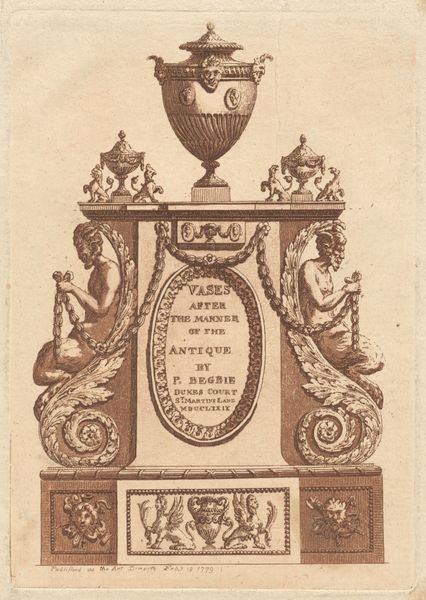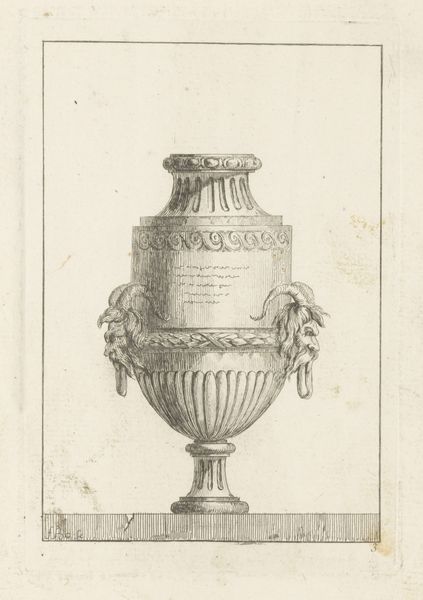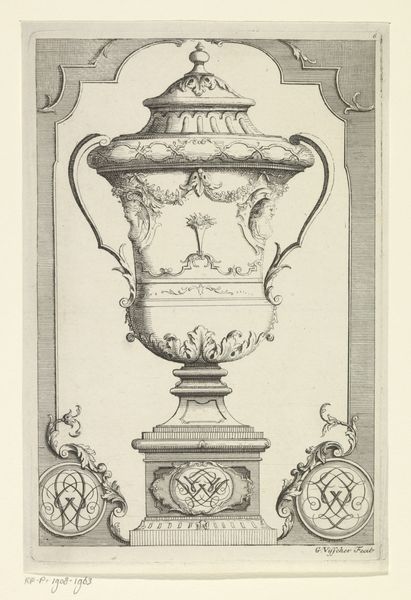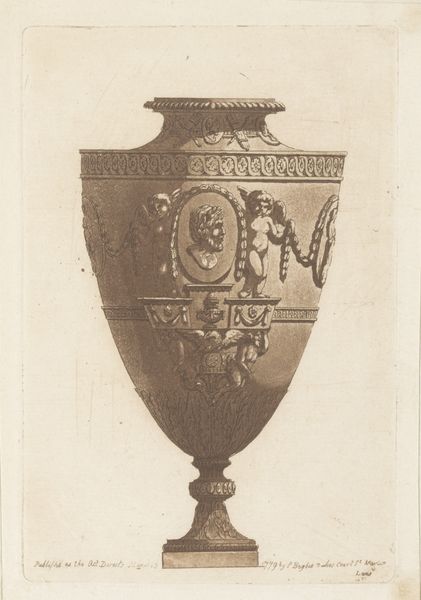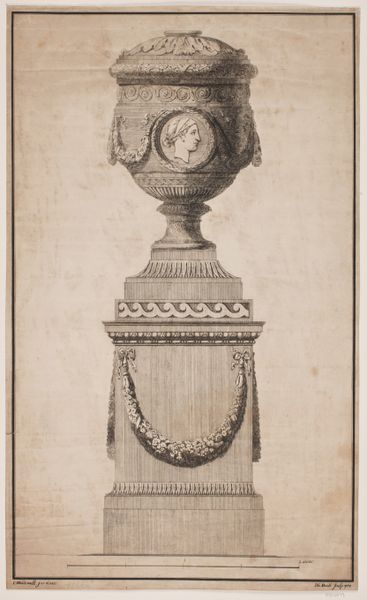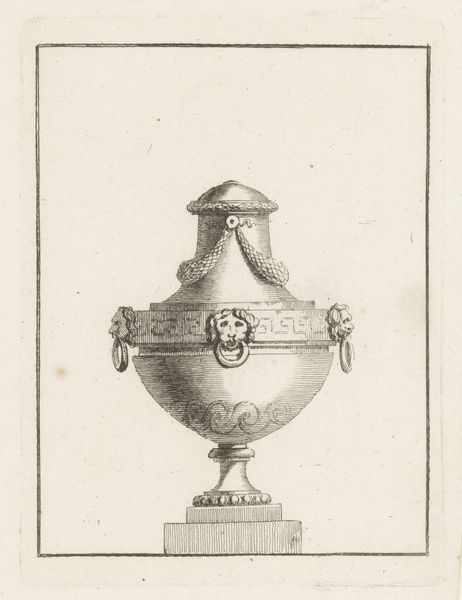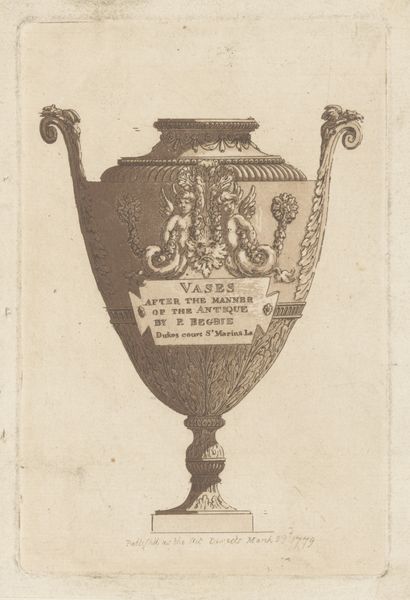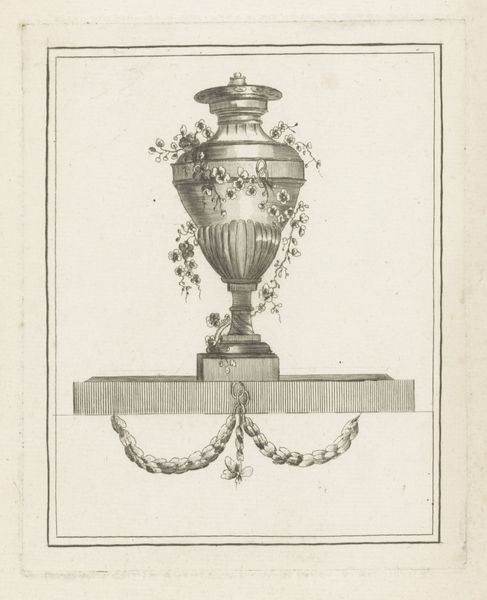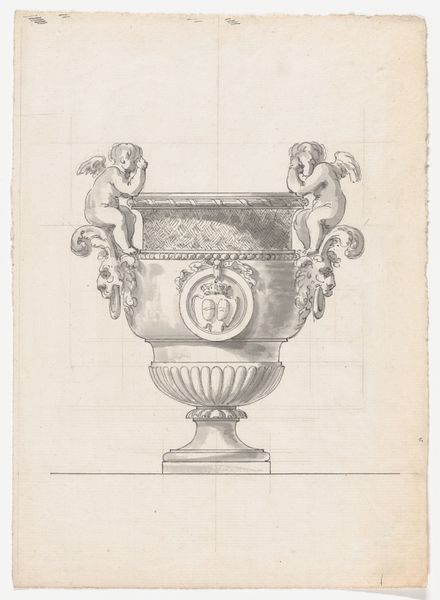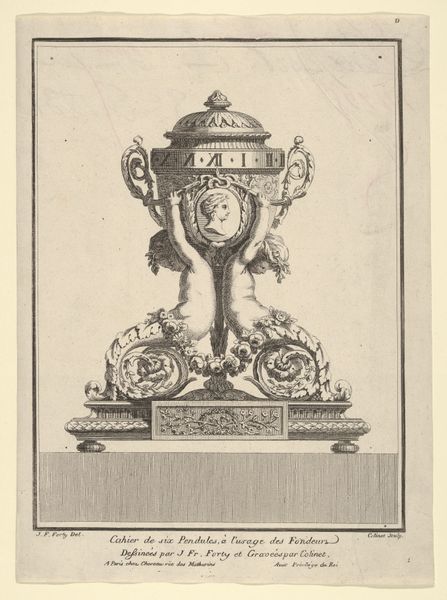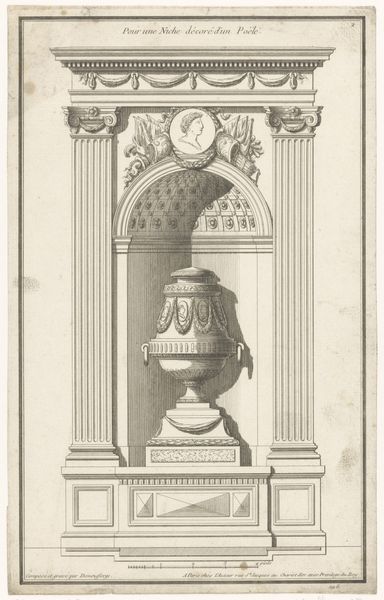
print, engraving
#
neoclacissism
# print
#
old engraving style
#
decorative-art
#
engraving
#
watercolor
Dimensions: height 158 mm, width 113 mm
Copyright: Rijks Museum: Open Domain
Editor: So, this is "Drie antieke vazen op sokkel," or "Three Antique Vases on a Stand," potentially from 1779, by F. Begbie. It's an engraving and gives off this distinctly old, almost sepia-toned feel. The vases look like they're styled after the antique, like the text says, but the image itself, especially the central vase with figures, feels ornate, maybe even playful. What cultural ideas can we draw from this design, that blends these ancient and playful aesthetics? Curator: It's fascinating how Begbie engages with the past, isn't it? These aren’t simply vases; they're vessels of cultural memory. Consider the Neoclassical style, which draws heavily from ancient Greece and Rome, aiming to revive their perceived ideals of order and reason. These vases echo a yearning for that lost golden age, but infused with a new decorative sensibility, more florid, what stories do you imagine the imagery narrates, given that interplay between "ancient" and "antique?" Editor: That's a great point. So the figures on the central vase, they’re almost cherubic, a lighthearted contrast to the more austere shapes of the vases themselves and those surrounding it. And I see the inclusion of what look to be swags and medallions -- not things you might typically associate with severe, classical forms. Curator: Precisely! These details tell us so much. Begbie uses a symbolic language here. The cherubic figures suggest innocence, playfulness. The swags and medallions represent abundance and prosperity, popular themes of that period. What does this combination of elements, the old and the new, whisper to you about the cultural mindset of the time? Editor: It sounds like a way to ennoble wealth, to wrap it in the legitimacy of the classical past but while embracing this era's unique aesthetic flair and fondness for excess. A display of sophistication with a sense of humor! Curator: Exactly! Begbie’s engraving isn’t just a decorative print; it’s a lens through which we can observe the evolving tastes and cultural values of the late 18th century. This combination tells us a lot about how societies redefine the legacy of antiquity to serve their evolving cultural stories. Editor: I never would have considered the cultural significance of swags before! Thanks!
Comments
No comments
Be the first to comment and join the conversation on the ultimate creative platform.
